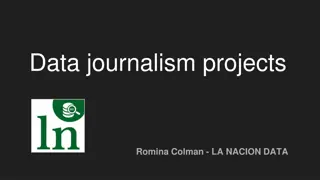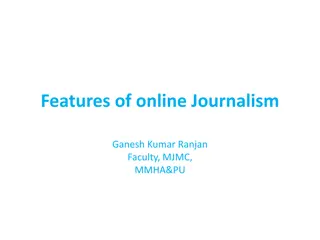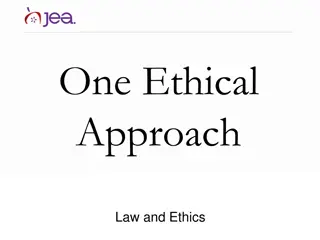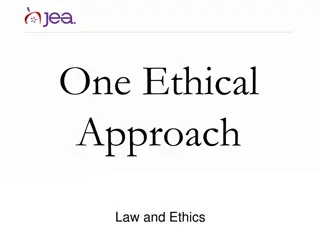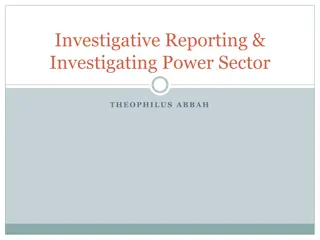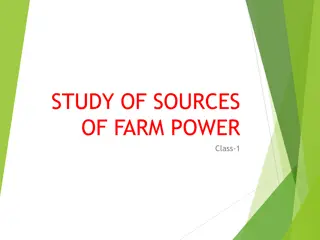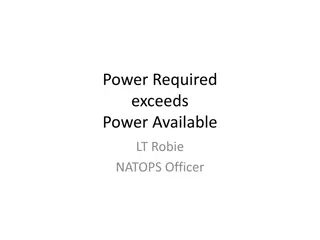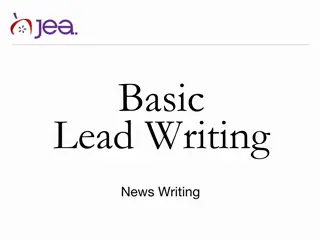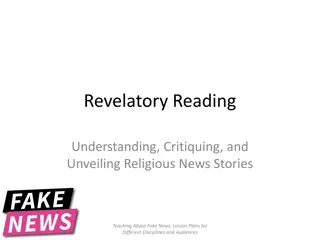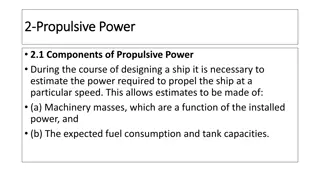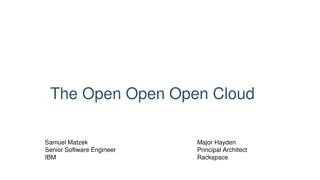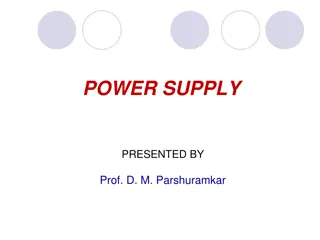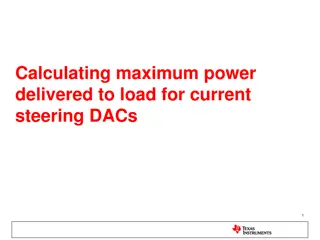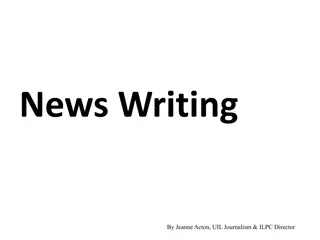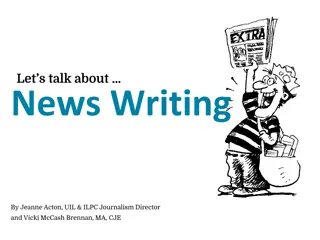Unveiling the Power of Data in Journalism
Exploring the crucial role of data in journalism, this content guides on utilizing data for story ideas, focus, context, and fact-checking. Learn the significance of approaching data with an open mind, conducting initial exploration, and finding compelling story ideas. Discover how to analyze and interpret data effectively to enhance journalistic reporting.
Download Presentation

Please find below an Image/Link to download the presentation.
The content on the website is provided AS IS for your information and personal use only. It may not be sold, licensed, or shared on other websites without obtaining consent from the author. Download presentation by click this link. If you encounter any issues during the download, it is possible that the publisher has removed the file from their server.
E N D
Presentation Transcript
Interviewing your data Sarah Butrymowicz butrymowicz@hechingerreport.org/@sarahbutro
Data is just like any other source. You might use it for Finding story ideas Figuring out how to focus your reporting Getting additional context to put in your article Fact checking what other sources have told you You might use data for all four of these steps for one article!
You should always approach data with A willingness for your hypothesis to be wrong An understanding that its an imperfect source And remember: Lack of data can be a story too!
Initial exploration Check the scope of the data. How many rows? What variables are included? Is anything suppressed? Do some sorting and filtering Look for obvious errors/limitations Basic math (summing, averages, percentages, etc)
Initial exploration (cont.) Understand what the data will and won t allow you to say Write down questions that you want the data to answer
Finding story ideas Change over time Numbers that confirm longstanding inequities/problems Numbers that challenge assumptions Data that have been overlooked Large numbers of students/colleges affected Test for basic relationships 100 90 80 70 60 50 40 30 20 10 0 0 20 40 60 80
Focusing your reporting The most/best The least/worst Outliers
Adding context How common or not is what you re writing about? How many people are affected? Has it gotten worse or better? How do different colleges/groups of students compare to each other? Tip: Write out your perfect data sentences as you d like to see them you article. In X percent of California s colleges, fewer than a third of students who receive Pell grants graduate. OR On average, public universities nationwide spent X dollars per student on instruction, compared to X dollars spent by for-profit schools.
Factchecking Take nothing at face value Track down the primary source for a number Think about making your own database if none exists waxing/hair removal yes state Arkansas California Florida Hawaii Indiana business yes nails anatomy physiology yes yes yes yes yes yes yes yes yes sanitation make up yes yes yes yes yes state law yes yes yes yes yes yes yes yes yes yes yes yes yes yes yes yes yes yes yes



